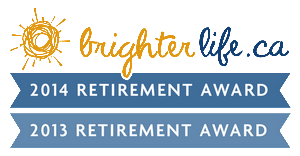I
have high blood pressure, and I have had it for a long time. It has gone down
since I retired but it is still borderline high. I use exercise and medication
to help control my blood pressure. Many people do not even know if they have
high blood pressure, so I suggest you get yourself checked. If you have high
blood pressure and you want to take control of your blood pressure, exercise
may be the key for you to do just that. Many people may not realize exercise
can help you control your blood pressure. Fortunately, it is all rather simple.
As
you probably know, you are more prone to high blood pressure as you age.
Unfortunately, we all age and this cannot be helped. But controlling your blood
pressure can be helped.
By
exercising you can prevent risks of high blood pressure which can cause stroke
and kidney disease. If you already have high blood pressure, exercising can
help you get it under control.
As
you exercise your heart gets stronger. When your heart is stronger it can pump
more blood more easily causing less pressure on your arteries. While exercise
may not work for everyone you can easily lower your blood pressure by around
ten millimeters.
Even
if you do not have high blood pressure, you can take these precautions to
prevent from getting it. Along with controlling your blood pressure you can
lose weight or maintain your desired weight which also affects your blood
pressure.
Overweight
people are prone to having high blood pressure and an increased risk of stroke
or kidney or heart diseases. If this is you, get moving and start exercising!
This doesn't mean you have to overdo yourself, take it slow at first and work
your way up. You will start feeling better as you continue a regular routine.
It
is suggested to do at least thirty minutes of exercise a day if possible.
Thirty minutes can be hard to do for some people, mainly because they can't
find the time. If this is the case, you can do short bursts of exercise. You
could exercise for ten minutes at a time throughout the day. At the end of the
day you've done thirty minutes.
Like
with starting any exercise routine, you will want to talk with your doctor
first. There are certain things you will have to have your doctor's okay for.
If you are a man over forty or a woman over fifty it might be better to talk
with your doctor first.
Smoking
increases blood pressure as well as makes it hard for some people to exercise.
Being overweight has an effect on everything and you definitely want to consult
your doctor before starting an exercise program.
Having
a chronic health condition or high cholesterol and even high blood pressure can
put you at risk when exercising. Be sure to talk to your doctor first. If you
do not visit the doctor regularly, do so now. It is better to know exactly what
health you are in before doing any strenuous activity or even exercising.
Always
warm up before starting an exercise routine. Begin slowly so you can slowly
build the intensity. Be sure to continuously breathe throughout your routine.
Holding your breath can cause your blood pressure to increase and the key of
exercising to help control or lower your blood pressure.
If
you experience any discomforts or pain while exercising notify your doctor
immediately. It is better to take full precaution even if it ends up being
something little. Once you start your exercise program, you want to track your
progress.
A
great way to do this is if you can't see your doctor regularly; purchase a home
blood pressure monitoring device. You want to check your pressure before you
begin and when you are finished. You want to make sure it's working and how
much it's working.

